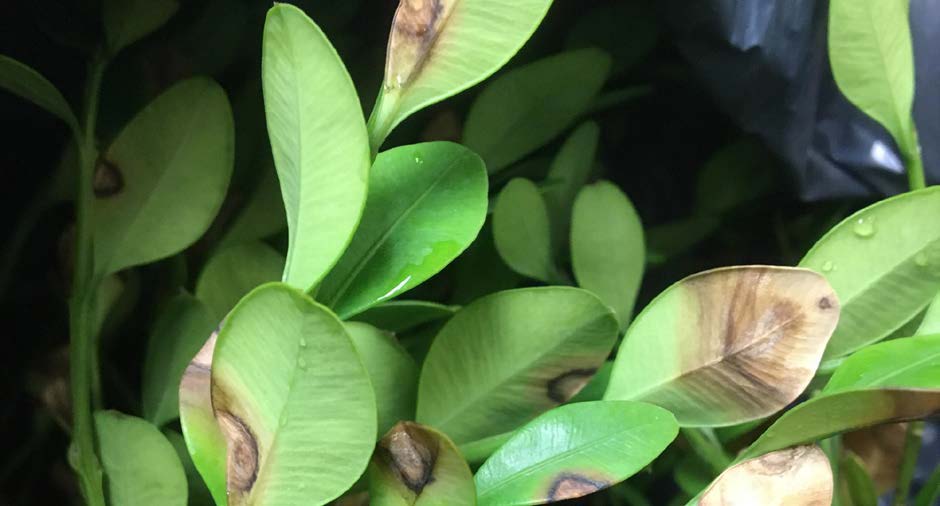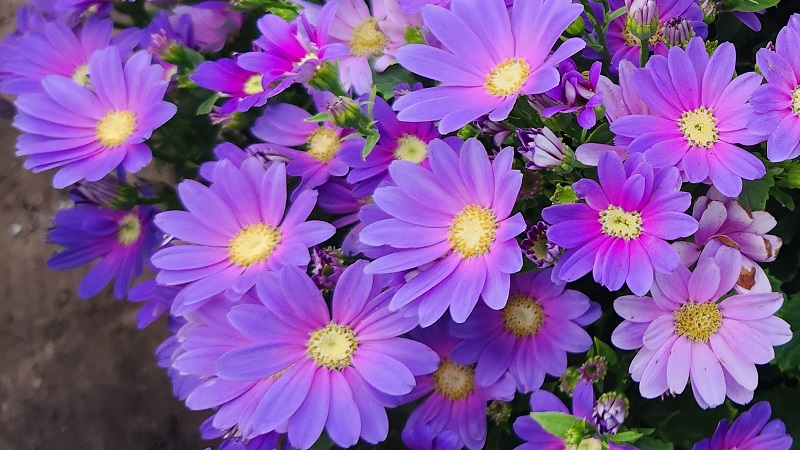Boxwood Blight Detected in Michigan

Photo credit: Michigan.gov
The Michigan Department of Agriculture and Rural Development (MDARD) is reporting that boxwood blight, a serious fungal disease that attacks boxwood, has been detected for the first time in Michigan. The disease was found in Oakland County in three separate locations: a landscape firm, a homeowner’s yard, and in holiday wreaths being sold at a retail store. The MDARD was also notified by the Wisconsin Department of Agriculture, Trade and Consumer Protection that infected boxwood may have been sold at other retail locations in Michigan.
“Boxwood blight is a devastating disease that has caused significant losses to homeowners and the nursery industry in states that already have the disease,” says Gina Alessandri, Director of MDARD’s Pesticide and Plant Pest Management Division. “In Connecticut alone, the first year after detection, boxwood losses in field-grown and container nurseries exceeded $3 million, and we could see a similar effect in Michigan should it become widespread.”
Boxwood blight produces dark-brown leaf spots and causes rapid defoliation that sometimes kills young boxwoods. Boxwood blight first appeared in the 1990s in the United Kingdom and is now widely distributed in Europe. In the U.S., the disease was first found in 2011 in Connecticut, North Carolina, and Virginia and has since spread to more than 24 states.
Boxwood blight affects all species of boxwood; however, some species and cultivars are more susceptible than others. American boxwood and English boxwood are highly susceptible. This disease also affects the related shrub, sweetbox, and Pachysandra, a common ground cover. Boxwood and Pachysandra are commonly used in commercial and residential plantings throughout Michigan.
Wreaths displayed outdoors are a potential concern if they are exposed to the elements. The biggest risk comes when people dispose of the infected wreaths after the holidays.
Alessandri advises that anyone who suspects that they have plants infected with boxwood blight should contact their local MSU Extension office.
To prevent introducing or spreading boxwood blight, MDARD recommends that nurseries, landscapers, and property owners implement the following preventative actions:
• Buy boxwood plants from reputable suppliers, nurseries, or garden centers, and carefully inspect them. If possible, purchase plants produced under the Boxwood Cleanliness Program.
• Buy less-susceptible boxwood varieties. Refer to this list developed by North Carolina State University.
• Isolate new boxwood plants from existing plantings for at least a month.
• Space plants enough for air to circulate around them.
• Avoid overhead watering and avoid working with plants when they are wet.
• Rake and remove leaf debris.
More information on boxwood blight is available at the following websites:
• AmericanHort Boxwood Blight Best Management Practices
• Connecticut Agricultural Experiment Station Boxwood Blight web page
• Michigan State University Extension









